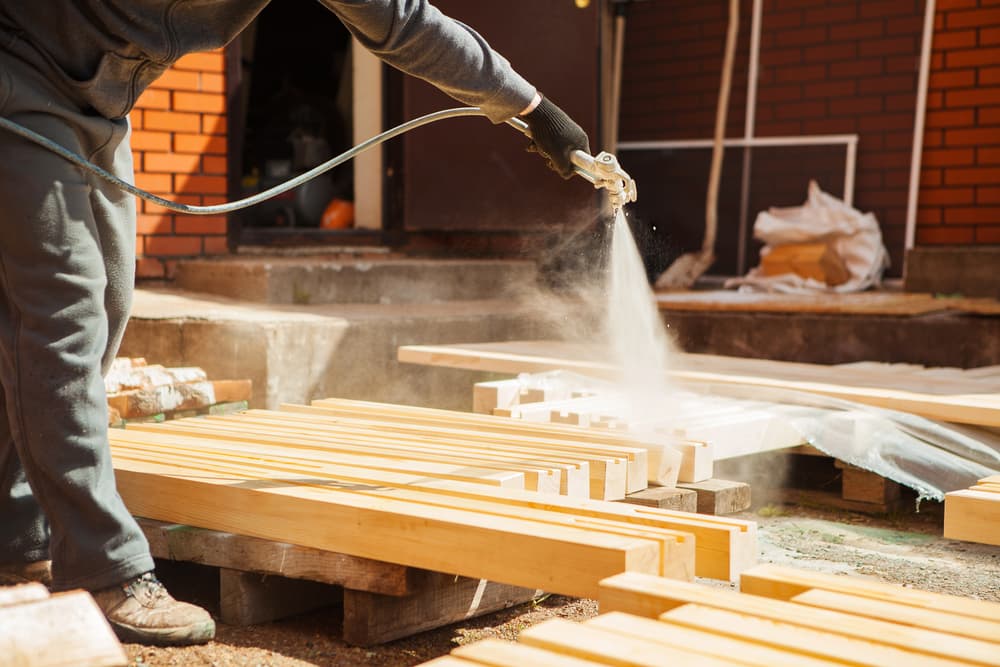How to Apply Fire Retardant on Wood
Wood is a versatile and widely used material in construction and various projects. However, its susceptibility to fire is a concern. Applying fire protection to wood is a proactive measure to enhance its flame resistance and protect your property. This guide will explore the steps to apply fire retardant on wood, the materials you'll need, and why it's crucial for safety.
What Wood Is Fire Resistant?
Not all wood is created equal when it comes to fire resistance. Some species, like hardwoods, are more naturally resistant to fire due to their density. Here are a few examples:
Ipe and Mahogany
These hardwoods have a high density, making them more difficult to ignite.
Cedar and Redwood
Known for their fire-resistant properties, these woods are commonly used in exterior applications like decking.
Cross-Laminated Timber (CLT)
While engineered wood, CLT has shown impressive fire performance. This is due to its mass and the charring effect that forms a protective layer during a fire.
It's important to note that while some woods are more fire-resistant than others, they are not entirely immune to fire damage. Treating these woods with a fire retardant can further increase their safety.
Is Pressure Treated Wood Fire Resistant?
Pressure-treated wood undergoes a process that infuses the wood with chemical preservatives. This is mainly to protect against rot, decay, and insects. However, it is not necessarily fire-resistant. The chemicals used for pressure treatment do not provide the wood with fire-retardant properties unless specified. Some pressure-treated wood products are also treated with fire retardants, so always check the labeling and product details.
If fire resistance is a priority, look for pressure-treated wood explicitly designed for fire safety. Otherwise, apply a suitable fire retardant to ensure added protection.
What to Use to Make Wood Fire Resistant
Before delving into the application process, it's essential to gather the necessary materials. Fire retardants are available in various forms, including sprays, paints, and coatings. Choose a product that suits your needs and the type of wood you treat. Look for fire retardants that comply with safety standards and regulations.
Additionally, you'll need the following items:
Protective Gear
Safety should be your top priority. Wear appropriate protective gear, including:
- Gloves
- Safety glasses
- A mask
This is to shield yourself from the chemicals in the fire retardant.
Applicator
The method of application depends on the product you choose. It could be a brush, roller, or spray gun. Ensure that the applicator is suitable for the texture and size of the wood surface.
Clean Cloth
Keep a clean cloth on hand for accidental spills or to wipe excess fire retardant off the wood.
Ventilation
Work in a well-ventilated area or outdoors to minimize fume exposure. Use fans or open windows to ensure proper air circulation if working indoors.

How to Apply Fire Retardant on Wood: Step By Step
Let's walk through the step-by-step process of applying fire retardant on wood:
Step 1: Preparation
Begin by preparing the wood surface. Clean it thoroughly to remove any dust, dirt, or debris. A clean surface ensures better adhesion of the fire retardant. If the wood has been previously treated or painted, consider sanding it lightly to create a more receptive surface.
Step 2: Protection
Cover any adjacent surfaces or areas you don't want to treat with a fire retardant. Use drop cloths or plastic sheets to protect surrounding objects and ensure a neat application. Remember that safety should always be a priority.
Step 3: Application
Apply the fire retardant according to the product instructions. Whether using a spray, paint, or coating, follow the recommended application method. Ensure even coverage, and pay special attention to any joints, corners, or areas prone to fire exposure.
Step 4: Drying Time
Allow the treated wood to dry completely. Drying times can vary depending on the type of fire retardant and environmental conditions. Be patient and follow the recommended drying time to ensure the effectiveness of the treatment.
By following the outlined steps and using the right materials, you can effectively protect wood surfaces from the devastating effects of fire. Remember to prioritize safety by wearing protective gear and working in a well-ventilated area.
Order Fire Retardants for Wood Substrate
Now that you know how to make wood fire retardant, the only thing left to do is to order your needed products. We have fire retardants made especially for wood substrate! In total, we have over a dozen options so you can find the perfect products to fit your wants and needs.
We encourage you to pay special attention to Contego Fire Retardant Paint & Primer, the ideal solution for wood protection:
- This product is a full-bodied latex.
- Single-component coating designed to protect a wide range of wood substrate materials.
- This includes interior and exterior wood, manufactured wood products, trusses, doors, raw lumber, decking, and more.
- It offers exceptional protection from heat and fire, plus a smooth, thin, and decorative finish.
- No special equipment is required.
- Any qualified contractor can apply it as easily as you would apply traditional paint.
Read Next
Learn How Can Fabric Be Treated With a Fire Retardant
Is Spray Foam Insulation Fire Retardant?
What Is in Fire Retardants Dropped From Planes?
Fire vs. Materials: Is Leather Fire Retardant?
Fire vs. Materials: Is Polyester Flame Retardant?
Life-Saving Materials 101: What Fabrics Are Flame Retardant
Recent Posts
-
Halloween Decor Safety: Protecting Costumes, Props & Haunted Houses with Fire Retardants
Halloween is one of the most creative holidays of the year. From glowing jack-o’-lanterns to elabora …Nov 5th 2025 -
Cost-Benefits of Investing in Fire Retardant Coatings
In today’s construction and safety-conscious environment, protecting buildings, assets, and people h …Nov 5th 2025 -
Fire Resistant vs Fire Retardant vs Intumescent: What's The Difference
When it comes to fire safety, the terms fire-resistant, fire-retardant, and intumescent are often us …Nov 5th 2025




